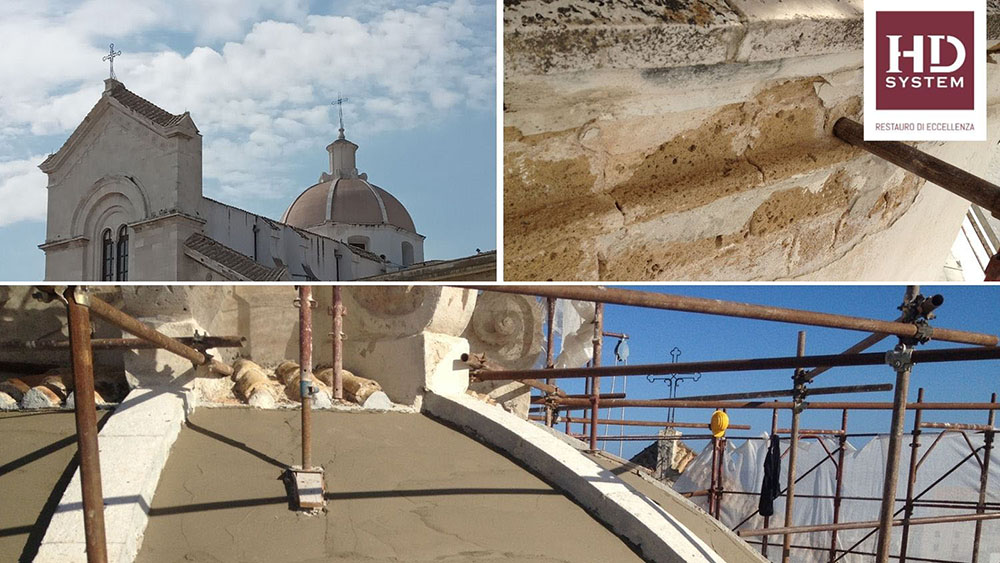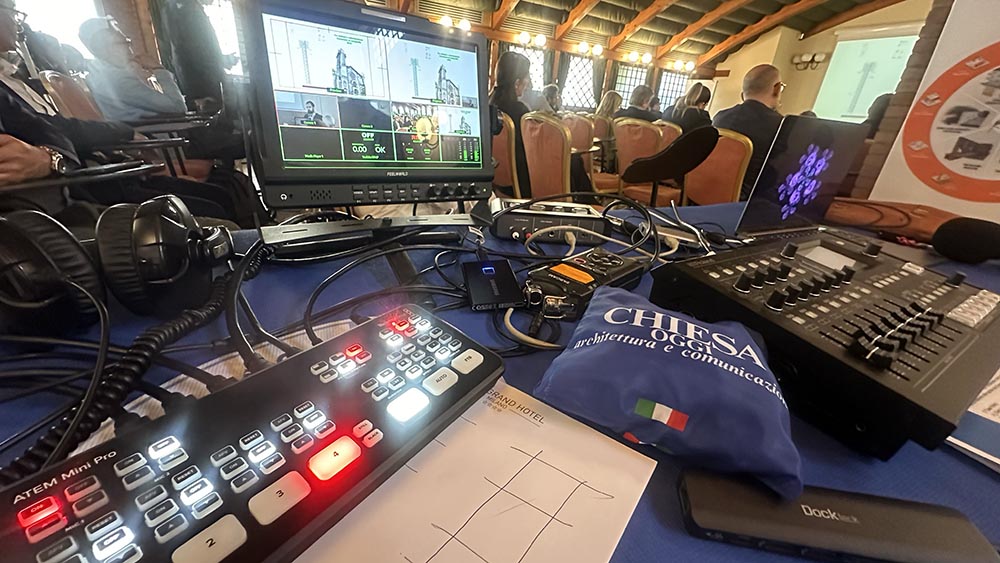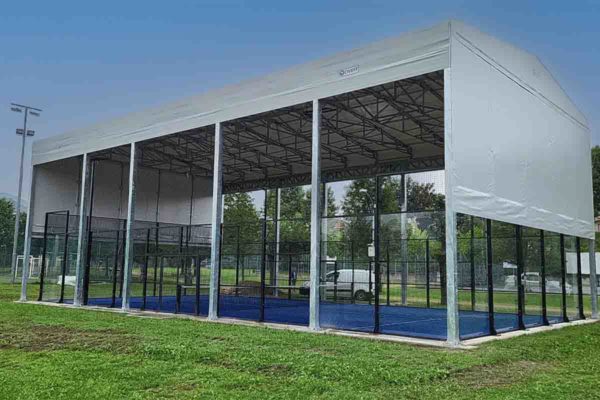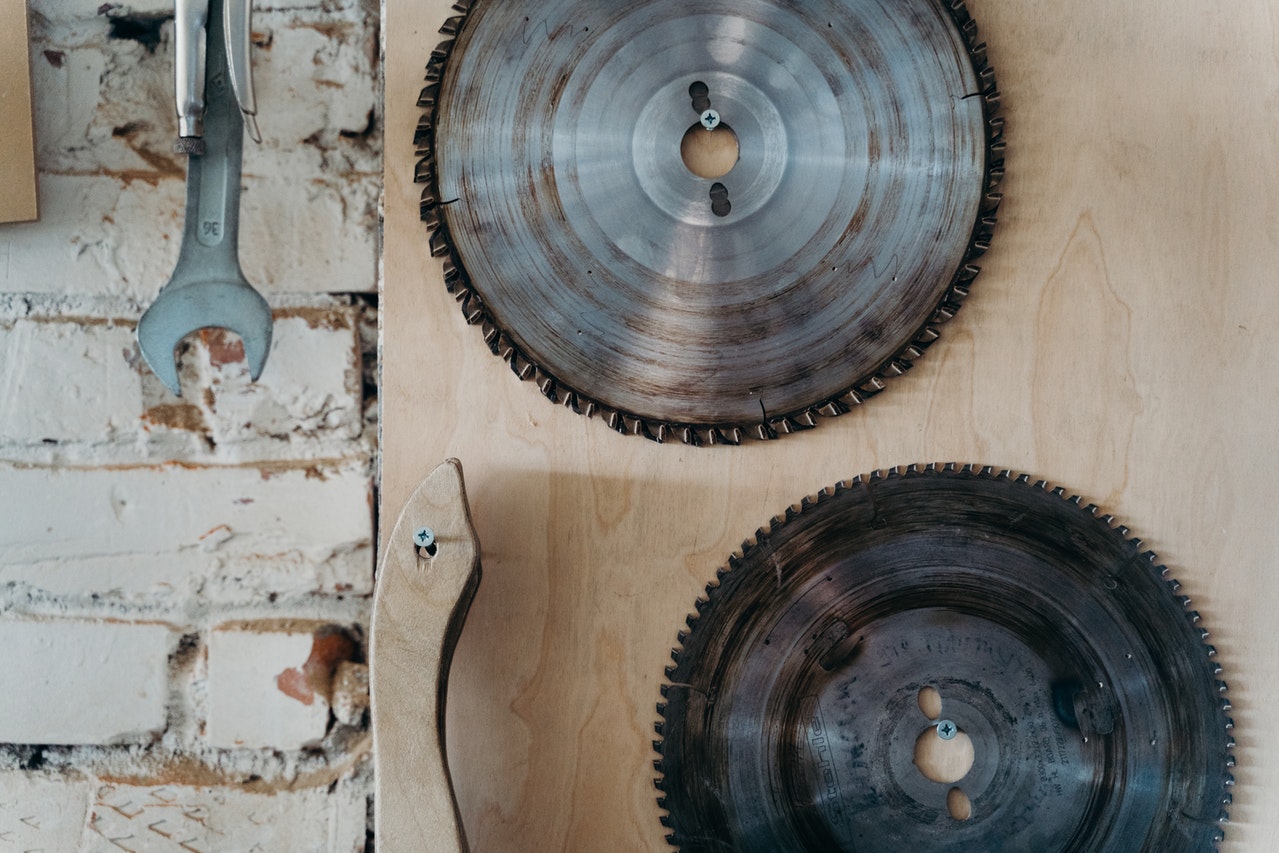The church of San Domenico di Giovinazzo: historical and artistic information
The church is accessed via a double flight of steps in local stone, leaning against the factory and delimited laterally by a balustrade.
The façade, majestic and elegant, also in local stone, has a square portal in the center culminating in a lunette, surmounted by a triangular tympanum above which a slender mullioned window stands out, enclosed in a refined arched frame. Two windows with round arches flank the portal, while the high front is engraved with a sober toothed frame. Recently, in 2006, the lunette was embellished with a majolica bas-relief, depicting St. Dominic, made by the artists Toni Bux and Aurelia Trigona, in a style that recalls the great Tuscan tradition of the Della Robbia. The figure of the half-length saint, who flaunts the Eucharist in his right hand and the Gospel in his left, stands out against the ultramarine blue background, creating a harmonious play of lights and colors on the monochrome facade with the black and white of the robe.
The plan of the building is a Latin cross and is distinguished by a central nave, very slender, and two lateral ones closed by a vault significantly lowered than that of the central nave and the transept, from which the dome develops. The presbytery is more raised with respect to the level of the central nave and the transept than with respect to the level of the side aisles. The floor and altars are made of local stone, in the eighteenth-century style typical of southern Italy. At the center of the presbytery there is the high altar covered with glossy marbled stucco.
There are numerous valuable works inside the church, of notable workmanship is the entrance compass decorated in Baroque style, surmounted by a precious acroterion with gilded carving. On the two large doors is painted, with a particular technique, the Expulsion of the merchants from the temple, probably the work of the Giovinazzese painter Saverio De Musso (1681-1763). In the right side aisle we can admire the canvas depicting the Holy Trinity and Dominican Saints by Saverio De Musso in 1734 (starting from the right there are: S. Rosa da Lima, S. Tommaso d'Aquino, S. Pietro martire, S. . Pius V and S. Giacinto). The second altar, the only one in marble with valuable polychrome inlay work, is dedicated to St. Joseph. The wooden statue of the Saint is of Neapolitan manufacture and dates back to the 18th century.
In the third altar there is a canvas depicting the Triumph of St. Dominic with the apostles Peter and Paul, attributed to Saverio De Musso. In the right side aisle we can admire the canvas depicting the Holy Trinity and Dominican Saints by Saverio De Musso in 1734 (starting from the right there are: S. Rosa da Lima, S. Tommaso d'Aquino, S. Pietro martire, S. . Pius V and S. Giacinto).
The second altar, the only one in marble with valuable polychrome inlay work, is dedicated to St. Joseph. The wooden statue of the Saint is of Neapolitan manufacture and dates back to the 18th century.
In the third altar there is a canvas depicting the Triumph of St. Dominic with the apostles Peter and Paul, attributed to Saverio De Musso.
In the transept, on the right, there is the canvas attributed to Giuseppe De Musso, son of Saverio (1717 - 1796), which represents the biblical episode of Joshua in the act of stopping the sun, on the left, we find the painting, also attributed 'it to Giuseppe De Musso, who illustrates the meeting on Mount Carmel between the prophet Elijah and the idolatrous priests of the god Baal.
On the right side of the presbytery there is a canvas depicting Moses making manna rain from heaven, attributed to the painter Giuseppe De Musso.
On the left wall of the presbytery we can admire the oldest and most valuable canvas, the work of the well-known Renaissance painter Lorenzo Lotto (ca 1480 - 1557), depicting St. Felix in the chair. It forms the central part of a triptych, which bore the image of S. Nicola da Tolentino on the right and that of S. Antonio da Padova on the left, was commissioned to the artist in 1542 for the church of S. Felice where, already in 1543, it was installed on the high altar.
On the same wall is the canvas illustrating the biblical episode of Moses making water gush from the rock, signed and dated (1785) by Giuseppe De Musso.
In the left arm of the transept you can admire the valuable canvas of the Madonna del Rosario, which presents the usual iconographic scheme: the Virgin with the Child in the center, at the foot of S. Domenico and S. Caterina.
Above, a series of 15 fake panels illustrate the mysteries of the Rosary. The central oval, depicting the Madonna with Child, is a work of considerable artistic value, made by an unknown 17th century painter, and is included in the larger canvas signed by Giuseppe De Musso and dated 1769.
Under the table of this altar is the silver reliquary urn containing the relics of Blessed Nicola Paglia, (Giovinazzo 1197 - Perugia 1256), made in 1959 by a Neapolitan silversmith, at the expense of comm. Nicolantonio Palmiotto.
On a shelf on the left wall stands the lovely wooden statue of the Immaculate Conception, commissioned in Naples in 1754 by the Collegiate Church of the same name.
Also on the left side, at the top, we find the canvas attributed to Giuseppe De Musso, depicting Queen Esther who, in the presence of King Ahasuerus, intercedes for the Jewish people, on the right side there is another canvas, attributed to the same painter, illustrating the episode of Abigail bringing gifts to King David.
The second altar in the left aisle features the canvas depicting Calvary, also painted by Giuseppe De Musso in 1746.
In the next altar there is the canvas representing Vincenzo Ferrer in the act of preaching to the crowds, attributed to Saverio De Musso. In front of the aforementioned altar is the baptistery in local limestone from the Church of San Felice.
The flight with the drone
A charming seaside village with an ancient heart, with the dolmen of San Silvestro, the Cathedral of Santa Maria Assunta and the Arch of Trajan. Giovinazzo is a delightful medieval village on the Adriatic, with its characteristic harbor and splendid fortified waterfront, between Molfetta and Bari, which is less than 20 km away. The Arch of Trajan is an elegant welcome to the ancient center, where the Palazzo del Marquis di Rende, the sixteenth-century Palazzo Saraceno, seat of the Town Hall, the Church of San Domenico and the Church of the Holy Spirit with "trullo" domes parade. The splendid Fontana dei Tritoni dominates Piazza Vittorio Emanuele II, the center of city life together with Piazza Costantinopoli. Going past the arches of via Cattedrale, you reach the Romanesque Cathedral of Santa Maria Assunta, which houses the Byzantine icon of the Madonna di Corsignano, the patron saint celebrated for the entire month of August.
Watch the video made with the drone here









